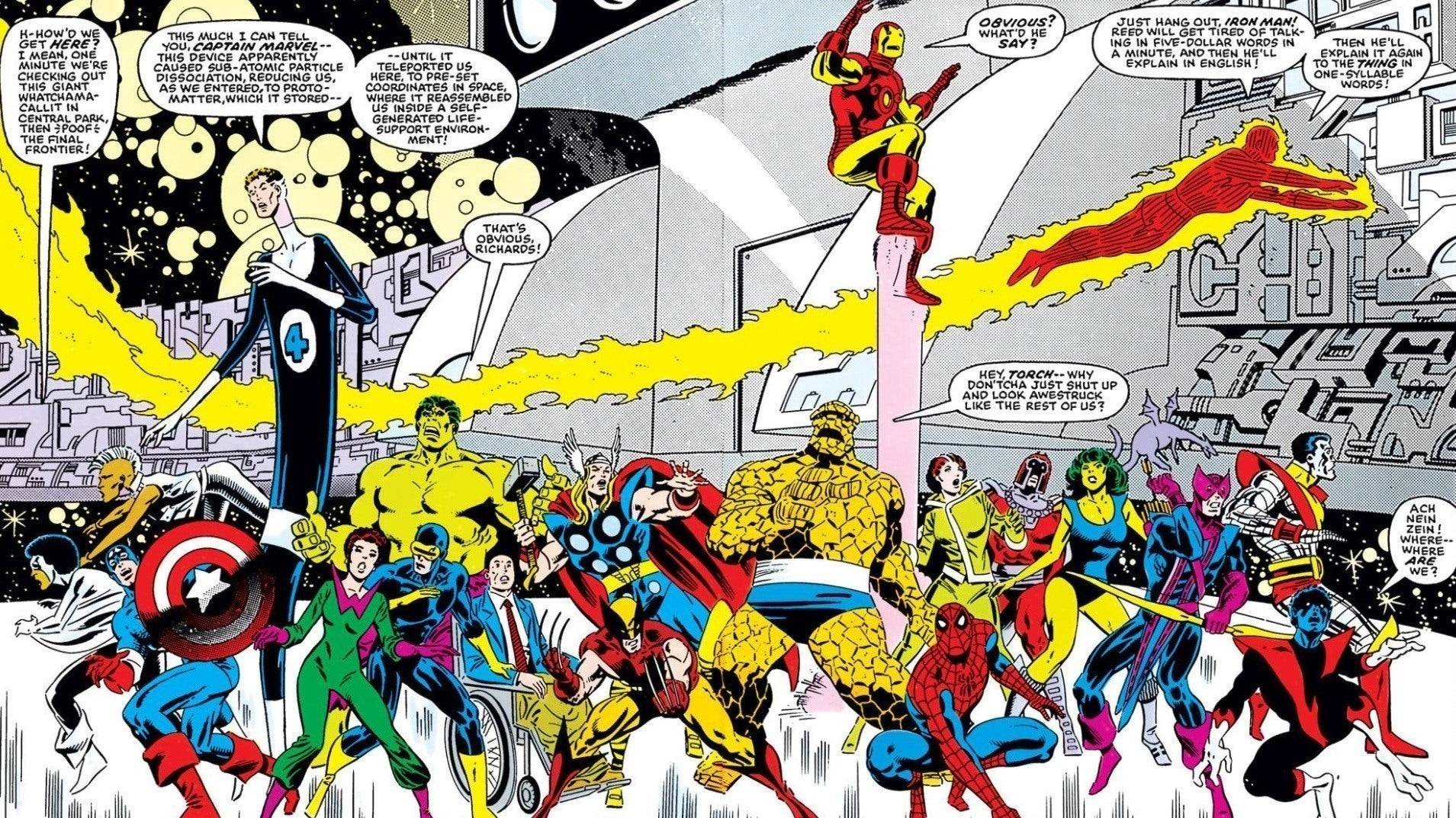In the mid-1980s, Marvel was riding high on a wave of success, both creatively and financially. Having weathered the financial storms of the late '70s, thanks in part to the lucrative Star Wars licensing deal, Marvel was poised to revolutionize the comic book industry with the launch of Secret Wars in 1984. This event not only reshaped the Marvel Universe but also set a new standard for the industry, leading to a plethora of new directions for Marvel's iconic heroes and villains.
This period also saw the release of other landmark stories, such as Frank Miller's Born Again arc in Daredevil, the return of Jean Grey in X-Factor, and Walt Simonson's Surtur Saga in Thor, among others. In this article, we'll delve into these pivotal narratives and other significant stories from the same era. Join us for Part 8 of our exploration of Marvel's essential issues!
More Essential Marvel
1961-1963 - The Birth of a Universe
1964-1965 - The Sentinels Are Born and Cap Dethaws
1966-1969 - How Galactus Changed Marvel Forever
1970-1973 - The Night Gwen Stacy Died
1974-1976 - The Punisher Begins His War on Crime
1977-1979 - Star Wars Saves Marvel From Bankruptcy
1980-1982 - Did the Dark Phoenix Saga Usher in the Greatest Decade for Marvel?
Frank Miller's Born Again and Walt Simonson's Surtur Saga
For some of the most celebrated storylines of this era, look no further than Born Again, Frank Miller's return to writing Daredevil, this time with David Mazzuchelli on art. Spanning Daredevil #227-233, this arc is often hailed as the definitive Daredevil story. It follows Karen Page, who, in a desperate state of addiction, sells Daredevil's secret identity for heroin. The information eventually reaches the Kingpin, who uses it to systematically dismantle Matt Murdock's life, leaving him homeless, jobless, and isolated. Matt's journey back to becoming Daredevil, coupled with the Kingpin's descent into fanaticism, crafts a compelling narrative. This story was loosely adapted in Season 3 of Netflix's Daredevil and will inspire the upcoming Disney+ series Daredevil: Born Again.

Walt Simonson's tenure on Thor, starting with issue #337 in 1983, introduced Beta Ray Bill, an alien worthy of wielding Mjolnir. Simonson's work revitalized Thor's mythic fantasy roots, culminating in the year-long Surtur Saga from #340-353. This epic tale sees the fire demon Surtur, ruler of Muspelheim, attempting to bring about Ragnarok with the Twilight Sword. He sends Malekith the Accursed to battle Thor, buying time to forge the sword. The saga concludes with a monumental battle involving Thor, Loki, and Odin against Surtur. Elements of this story were later incorporated into the films Thor: The Dark World and Thor: Ragnarok.
Secret Wars Changes Comics Forever
In Part 4 of this series, we discussed how the 1973 Avengers/Defenders War foreshadowed the event crossovers that would become a staple for Marvel and DC. This trend fully materialized in 1984 with Secret Wars, a 12-issue miniseries crafted by then Editor-in-Chief Jim Shooter, with art by Mike Zeck and Bob Layton. Conceived as a marketing tie-in with Mattel for a toy line, the story features the cosmic entity the Beyonder transporting a group of Marvel heroes and villains to Battleworld to determine the supremacy of good or evil. The series, while popular for its large cast and universe-altering effects, is often critiqued for its lack of depth and character consistency. However, its success led to Secret Wars II and influenced DC's Crisis on Infinite Earths, solidifying the event model in comic publishing.

Spider-Man’s Symbiote Suit and Other Iconic Spidey Stories
Following the foundational runs by Stan Lee and Gerry Conway, Roger Stern took the helm of Amazing Spider-Man with issue #224, revitalizing the series. His most notable contribution was the introduction of the Hobgoblin in #238, who quickly became one of Spider-Man's most formidable adversaries. Stern's original Hobgoblin saga was cut short due to editorial interference, leaving the villain's identity unrevealed until Stern's return in the 1997 miniseries Spider-Man: Hobgoblin Lives.
Simultaneously, Amazing Spider-Man #252 introduced Spider-Man's black symbiote costume, which originated on Battleworld during Secret Wars. This costume sparked a significant subplot leading to the emergence of one of Spider-Man's most iconic villains. The symbiote saga has been adapted numerous times, including in Spider-Man 3, Spider-Man: The Animated Series, Spectacular Spider-Man, and Insomniac's Spider-Man 2. Another pivotal story from this period is The Death of Jean DeWolff in Spectacular Spider-Man #107-110, a dark tale where Spider-Man hunts the Sin-Eater, who killed his ally Jean DeWolff, leading to a conflict with Daredevil.

Jean Grey Returns, the Rise of Apocalypse, and Other Mutant Landmarks
The mid-1980s were also a transformative time for Marvel's mutants. Vision and the Scarlet Witch #4 confirmed Magneto as the father of Quicksilver and Scarlet Witch, a revelation that remained canon for decades. X-Men #171 saw Rogue defect from the Brotherhood of Evil Mutants to join the X-Men, cementing her status as a beloved heroine. X-Men #200 featured Magneto's trial and subsequent leadership of Xavier's School, marking his shift to heroism.
The most significant mutant developments were Jean Grey's resurrection and the introduction of Apocalypse. After the Dark Phoenix Saga, Jean Grey returned in a two-part story across Avengers #263 and Fantastic Four #286, leading to the formation of X-Factor with the original X-Men. X-Factor #5-6 introduced Apocalypse, an ancient Egyptian mutant enhanced by Celestial technology, who became a major antagonist for the X-Men and beyond, appearing in various adaptations, including the 2016 film X-Men: Apocalypse.
















